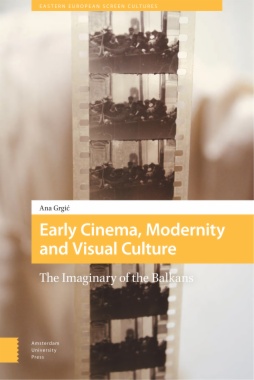Based on original archival research, Early Cinema, Modernity and Visual Culture: The Imaginary of the Balkans is the first study on early cinema in the region from a transnational and cross-cultural perspective. It investigates how the unique geopolitical positioning of the Balkan space and its multiculturality influenced and shaped visual culture and cinema. Countering Eurocentric modernity paradigms and reframing hierarchical relations between centres and peripheries, this book adopts an alternative methodology for interstitial spaces. By deploying the notion of the haptic, it establishes new connections between moving image artefacts and print media, early film practitioners, the socio-political context and cultural responses to the new visual medium.
- Cover
- Table of Contents
- Acknowledgements
- Foreword: Travelling Down /Travelling Through
- Preface: The Balkan Imaginary of Ruins
- Introduction: Charting the Terrain: Early Cinema in the Balkans
- The Balkan Space of Enquiry
- The Invention of the Balkans
- Modernity, Cinema, and the Balkans
- Visual Culture, Early Cinema, and Hapticality
- Connecting a Disconnected Space: A Working Methodology
- Journey through the Archives
- The Field of Vision
- Limitations and Structure
- 1. Visual Culture in the Balkans, Haptic Visuality, and Archival Moving Images
- My Journey through Savage Europe
- Hapticality of Archival Moving Images
- Hapticality of Visual Culture in the Balkans
- The Byzantine Cultural Legacy
- The Ottoman Cultural Legacy
- Architecture, Fresco Painting, Icons, Textiles, and Jewellery
- ‘Image survivante’ and the Legacy of Balkan Visual Culture
- The Difference in Perception
- Works cited
- 2. Historicizing the Balkan Spectator and the Embodied Cinema Experience
- Anticipating Cinema
- The Arrival of Cinema: Haptical Encounters with Moving Images
- The Spaces of Cinema and Coffee Consumption
- Cinema and ‘Intensive Life’
- Cinema in the City
- Looking Back at Cinema
- Works cited
- 3. Mapping Constellations: Movement and Cross-cultural Exchange of Images, Practices, and People
- Journeys from the East: Cross-Cultural Travels of the Shadow-Puppet Theatre
- The Cinematograph at the Theatre
- Travelling Cinema Exhibitors and Filmmakers
- The Mysterious Hungarian and the Serbian-Bulgarian Connection
- The Balkan Cinema Pioneers and the Lost Gaze
- Cinema and the Global Imaginary
- Works cited
- 4. Imagining the Balkans: The Cinematic Gaze from the Outside
- Exoticism and the Balkans
- The Orientalist Gaze in the Marubi Studio Photographs
- ‘Oriental’ Austria: Cinematic Representations of Bosnia and Herzegovina
- Sensational Killings and Wild Insurgents at the Cinema
- The Charles Urban Trading Company in the Balkans
- Imperial Imagination, Archives, and Moving images
- The Reverberations of Balkan Wars and Siege of Shkodra
- Works cited
- 5. ‘Made in the Balkans’: Mirroring the Self
- The Desire for ‘Our’ Views
- High-life and the Pleasure of the Screen
- Scientific Spectacles
- Views of Ethnographic and Socio-Political Significance
- Pictures of Home
- Constructing the Nation through Cinema
- Historical Drama from Serbia
- Historical Epic from Romania
- Works cited
- Conclusion: The Future Perfect of Early Balkan Cinema
- Bibliography
- Archival Sources
- Interviews
- Appendix
- Index

